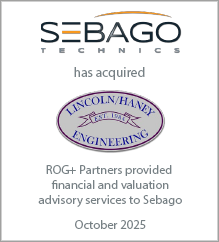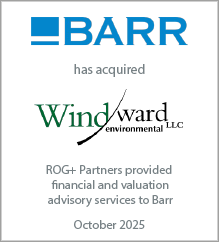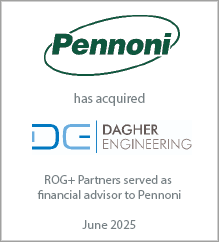Michael S. O'Brien is a principal in the Washington, DC office of Rusk O'Brien Gido + Partners. He specializes in corporate financial advisory services including business valuation, fairness and solvency opinions, mergers and acquisitions, internal ownership transition consulting, ESOPs, and strategic planning. Michael has consulted hundreds of architecture, engineering, environmental and construction companies across the U.S. and abroad.
Aligning Your Ownership Strategy with Your Strategic Plan
November 18, 2025
The relationship between ownership strategy and business strategy is deeply intertwined. When these two elements are aligned, they create a cohesive ecosystem that promotes growth and stability, which is essential for building a sustainable company, attracting top talent, and enhancing shareholder value. In this discussion, we will explore the significance of this alignment and how to achieve it effectively.
The Importance of Alignment
Aligning your share ownership strategy with your business strategy is crucial for fostering a sense of purpose and realizing the rewards that stem from that purpose. Here’s how to achieve this alignment:
1. Define Clear Business Objectives
Many companies struggle because they lack clarity about their business purpose. It is vital to articulate your vision, mission, and goals, which should encompass:
- Financial Targets: Set realistic and measurable financial goals.
- Market Positioning: Identify your competitive edge and target market.
- Long-term Aspirations: Outline where you envision the company in the future.
This foundational step enhances motivation, establishes a long-term vision, and makes investment more attractive to both internal and external stakeholders.
2. Foster Motivation
When key employees perceive a vested interest in the company’s success, they are more likely to perform at their best. An aligned share ownership strategy can motivate employees to act in the company’s best interests. This alignment is achieved by:
- Ensuring transparent short-term and long-term benefits for ownership.
- Avoiding the common pitfall of failing to communicate the benefits of ownership in closely held companies.
3. Cultivate a Long-term Vision
An ownership strategy that aligns with business objectives ensures that shareholders focus not only on immediate gains but also on the company’s long-term sustainability. While growth for its own sake may yield short-term benefits, it can jeopardize long-term value. Limiting investments may seem beneficial in the short term, but it can reduce future cash flow and attractiveness for future shareholders.
4. Attract Investment
Companies that demonstrate a cohesive strategy between share ownership and business objectives typically exhibit more stable financial results. Investors (internal and external) are more inclined to support companies that show:
- Growth Potential: Clear strategies for expansion into new markets or services.
- Financial Stability: Consistent returns and a commitment to shareholder value.
Remaining stagnant (we like our current size; we don’t want to grow) is not a viable strategy; it is essential to have a clear direction for future growth.
Share Ownership Structure
Selecting an ownership structure that aligns with the company’s values and strategic objectives is essential. Common structures include:
- Management Ownership Structure: Concentrated ownership among a small group, ideal for startups, but may limit long-term growth potential.
- Key Employee Ownership Plans: Reserved for top-performing employees, offering equity-based incentives tied to performance.
- Employee Stock Ownership Plans (ESOPs): Enhance productivity and loyalty by giving employees a stake in the company, promoting a culture of collective success.
- Equity Incentives: Align the interests of executives with those of shareholders through stock options, restricted stock units (RSUs), and stock bonuses.
- Dividends: Implement tailored dividend policies to incentivize performance and drive shareholder value through sustainable improvements.
Foster Open Communication
Effective communication is essential for aligning ownership and business strategies. To maintain transparency:
- Regular Updates: Keep stakeholders informed about company performance, market conditions, and future strategies.
- Transparent Policies: Clearly explain the rationale behind stock ownership policies to ensure stakeholders understand their contributions to company objectives.
Encouraging open dialogue fosters trust and reinforces the connection between ownership and business strategy. Remember, alignment is an ongoing process that requires regular assessments and adjustments to respond to market changes or company priorities.
Conclusion
Aligning your stock ownership strategy with your business strategy is vital for establishing a solid foundation for growth and success. By defining clear business objectives, understanding stakeholder interests, selecting appropriate ownership structures and incentive tools, maintaining open communication, and fostering flexibility, companies can cultivate a harmonious relationship between ownership and business operations. This alignment not only enhances motivation and engagement among stakeholders but also propels the organization toward achieving its long-term goals.








